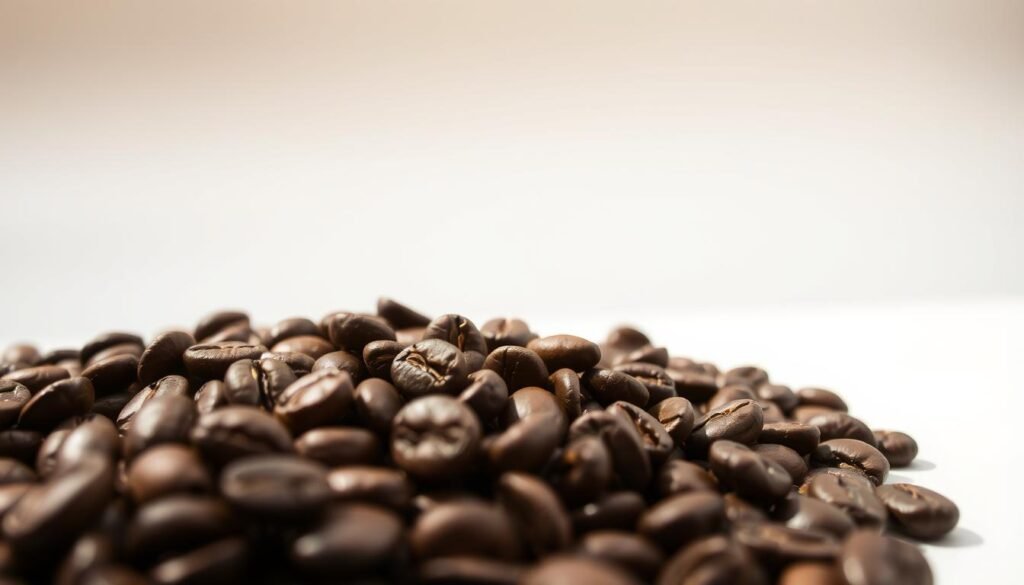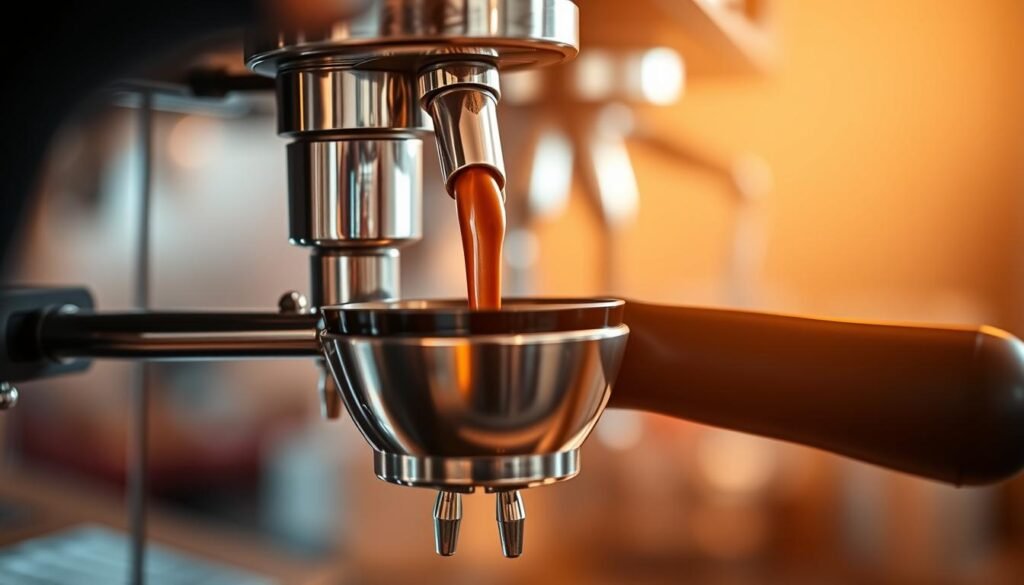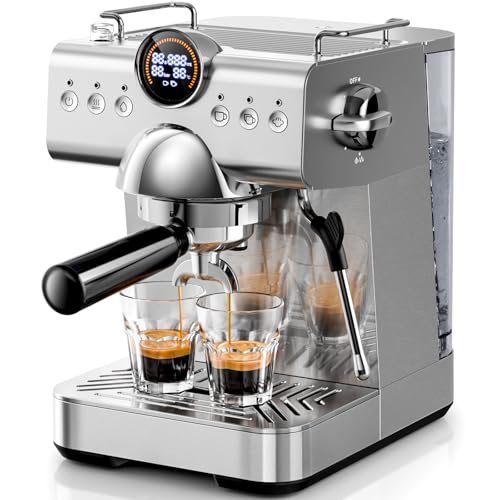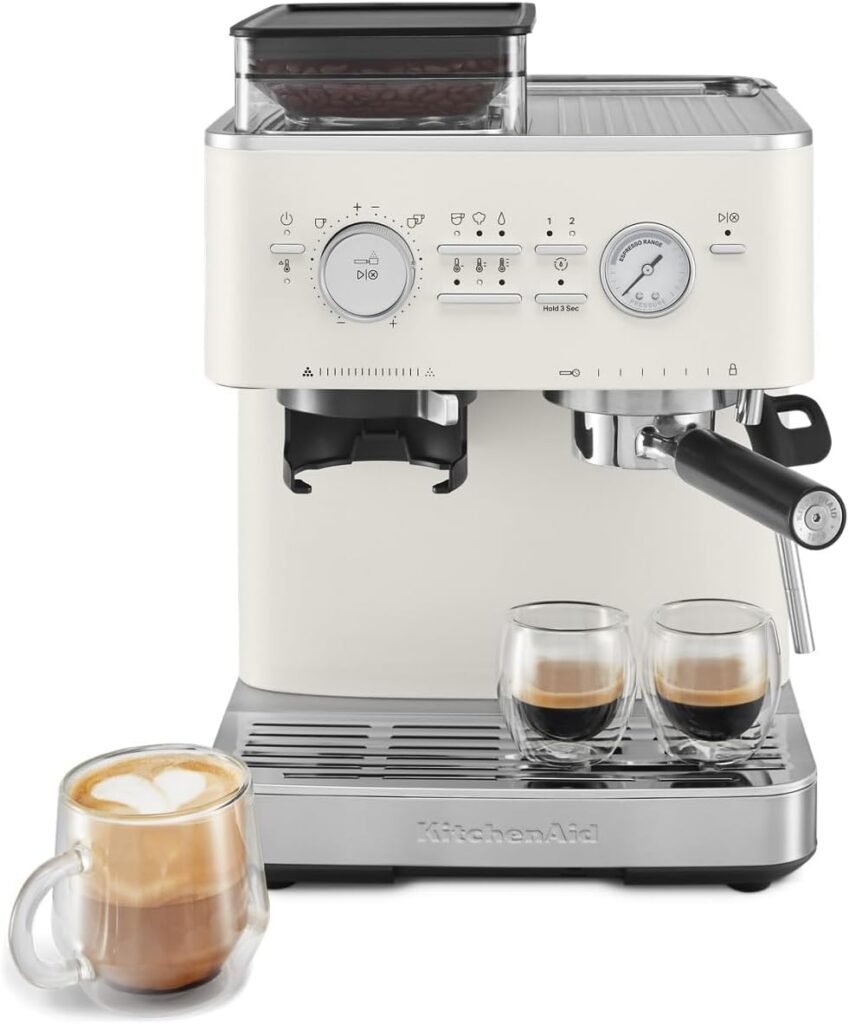I still remember my first experience with espresso. The rich flavor and thick crema left a lasting impression, making me wonder about the difference between this and regular coffee.
As it turns out, espresso is not a different type of coffee, but rather a specific brewing method that uses high pressure to extract flavors from finely ground coffee beans.
This distinction is often misunderstood, leading to confusion among coffee enthusiasts. In this article, I’ll clarify the relationship between coffee and espresso, exploring their differences in brewing techniques, bean preparation, taste profiles, and caffeine content.
Key Takeaways
- Espresso is a type of coffee made using a specific brewing method.
- The main difference lies in the brewing technique and equipment used.
- Coffee beans for espresso are typically ground finer than those for regular coffee.
- The flavor profile and caffeine content differ between espresso and coffee.
- Understanding these differences can enhance your coffee appreciation.
Understanding the Basics: Espresso and Coffee Defined
The journey to understanding espresso and coffee begins with defining what they are and how they’re made. At the heart of both beverages are coffee beans, which are subjected to different processes to bring out unique flavors and textures.
What Exactly Is Espresso?
Espresso is a concentrated beverage made by forcing pressurized hot water through finely ground coffee beans. This process, known as brewing coffee, extracts a significant amount of solids from the beans, resulting in a rich, intense drink. The type coffee used for espresso is typically a specific roast and grind, optimized for this brewing method.
Coffee: The Broader Category
Coffee, on the other hand, is a broader term that encompasses a variety of brewing methods, including drip, pour-over, French press, and cold brew. The process of brewing coffee involves extracting soluble components from coffee beans into water, which can be done in multiple ways. The simplest methods, like Turkish coffee and cowboy coffee, involve boiling ground coffee in water.
| Brewing Method | Characteristics | Flavor Profile |
|---|---|---|
| Espresso | High pressure, fine grind | Rich, intense |
| Drip | Automated, medium grind | Balanced, straightforward |
| French Press | Immersion, coarse grind | Bold, nuanced |

In summary, while both espresso and coffee start with the same basic ingredient—beans—the differences lie in their preparation methods, resulting in a variety of flavors and textures. Understanding these basics is key to appreciating the unique qualities of each.
The Brewing Battle: Espresso vs Coffee Methods
Espresso and coffee brewing methods are fundamentally different in several key aspects. The distinction lies not only in the equipment used but also in the technique, precision, and the physical principles behind each method.
Espresso Brewing: Pressure and Precision
Espresso brewing is a highly specialized process that relies on pressure and precision. It involves forcing pressurized hot water through finely ground coffee beans, resulting in a concentrated beverage. The ideal water temperature for espresso is around 200°F, and the process takes approximately 20-30 seconds. The grind size is critical, as it must be fine enough to allow for the right amount of extraction under pressure.

Coffee Brewing Techniques: From Drip to French Press
Coffee brewing encompasses a variety of techniques, including drip brewing, French press, pour-over, and more. Each method has its unique characteristics and requirements. For instance, drip coffee makers use water between 195-205°F, and the brewing time can range from several minutes. The grind size varies depending on the method; for example, French press requires a coarser grind than espresso.
The Role of Grind Size and Water Temperature
The grind size and water temperature are crucial factors in both espresso and coffee brewing. Grind size affects the rate of extraction, with finer grinds leading to faster extraction and coarser grinds resulting in slower extraction. Water temperature influences the extraction efficiency and the flavor compounds extracted from the coffee beans. Optimal temperature ranges differ slightly between espresso and other coffee brewing methods.
| Brewing Method | Grind Size | Water Temperature | Brewing Time |
|---|---|---|---|
| Espresso | Fine | 200°F | 20-30 seconds |
| Drip Coffee | Medium | 195-205°F | Several minutes |
| French Press | Coarse | 195-205°F | 4-5 minutes |
Understanding these differences is key to appreciating the unique qualities of espresso and coffee. By adjusting variables like grind size and water temperature, one can significantly impact the final product’s taste and quality.
Bean to Cup: Differences in Ingredients and Preparation
To truly appreciate the nuances of espresso and coffee, it’s essential to examine their preparation processes. The differences in ingredients and preparation methods play a significant role in the final product.
Are Espresso Beans Different from Coffee Beans?
While the type of coffee bean used for espresso and coffee can be the same, the roast level and grind size differ significantly. Espresso beans are typically roasted darker to bring out the desired intense flavor. To make true espresso, you’d need to finely grind espresso-roasted beans and brew them in a classic espresso machine. The quality of the beans is crucial, as it directly impacts the flavor profile.
Roast Levels and Their Impact
The roast level of the beans is a critical factor in determining the flavor of both espresso and coffee. Espresso roasts are generally darker, which enhances the bold flavors and oils within the bean. In contrast, coffee can be roasted to various levels, depending on the desired flavor profile. The roast level affects the extraction rate and flavor development, making it a key consideration in the preparation process.
The Importance of Grind Consistency
Grind consistency is vital for both espresso and coffee, but it’s particularly crucial for espresso. A consistent grind ensures proper extraction, while uneven particles can lead to channeling and poor flavor. The grind size affects the surface area of the coffee beans, with espresso requiring a much finer grind than other brewing methods. Professional baristas often adjust grind size throughout the day to maintain consistent quality.
Taste, Texture, and Caffeine: The Sensory Experience
The sensory experience of espresso and coffee is a multifaceted topic that encompasses taste, texture, and caffeine content. When evaluating these beverages, it’s essential to consider the distinct characteristics that set them apart.
Flavor Profiles: Intensity vs. Complexity
Espresso is known for its intense, concentrated flavor, which is a result of the pressurized brewing process. In contrast, coffee can exhibit a broader range of flavors depending on the brewing method, bean origin, and roast level. The complexity of coffee’s flavor profile is often described as more nuanced compared to the bold intensity of espresso.
Crema, Body, and Mouthfeel
The texture and mouthfeel of espresso and coffee are significantly different. Espresso is characterized by its rich crema, a creamy texture that forms on top of a well-made shot. Coffee, on the other hand, can range from a light body in drip coffee to a heavier, more velvety texture in French press coffee. The mouthfeel of these beverages contributes significantly to their overall sensory experience.
Caffeine Content: Myths and Facts
A common myth surrounding espresso and coffee is that espresso contains more caffeine. While it’s true that ounce-for-ounce, espresso has more caffeine than coffee, a typical serving size of espresso (about 1 ounce) contains approximately 64 milligrams of caffeine. In contrast, an 8-ounce cup of coffee contains about 92 milligrams of caffeine. The brewing method also affects caffeine extraction, with different methods resulting in varying levels of caffeine.
| Beverage | Serving Size (oz) | Caffeine Content (mg) |
|---|---|---|
| Espresso | 1 | 64 |
| Drip Coffee | 8 | 92 |
Different people metabolize caffeine at varying rates, which affects how they experience the stimulant effects of both espresso and coffee. Understanding these differences is crucial for appreciating the unique characteristics of each beverage.
Conclusion: Choosing Between Espresso and Coffee
Understanding the nuances between espresso and coffee can elevate your coffee experience. While both are variations of the same beverage, their differences in brewing methods, ingredients, and sensory experiences set them apart. Espresso, with its rich crema and concentrated flavor, offers a unique taste experience, whereas coffee, brewed through various methods like drip or cold brew, provides a range of flavors and textures.
The choice between espresso and coffee ultimately depends on your taste preferences, time constraints, and desired caffeine effects. For those with limited time, espresso provides a quick and potent caffeine boost. In contrast, coffee brewed through methods like cold brew can offer a smoother, less acidic taste experience over a longer period.
Many coffee enthusiasts enjoy both espresso and other coffee preparations for different occasions, appreciating the versatility and richness they bring to their coffee culture. By understanding these differences, you can enhance your appreciation for both and explore the diverse world of coffee.




